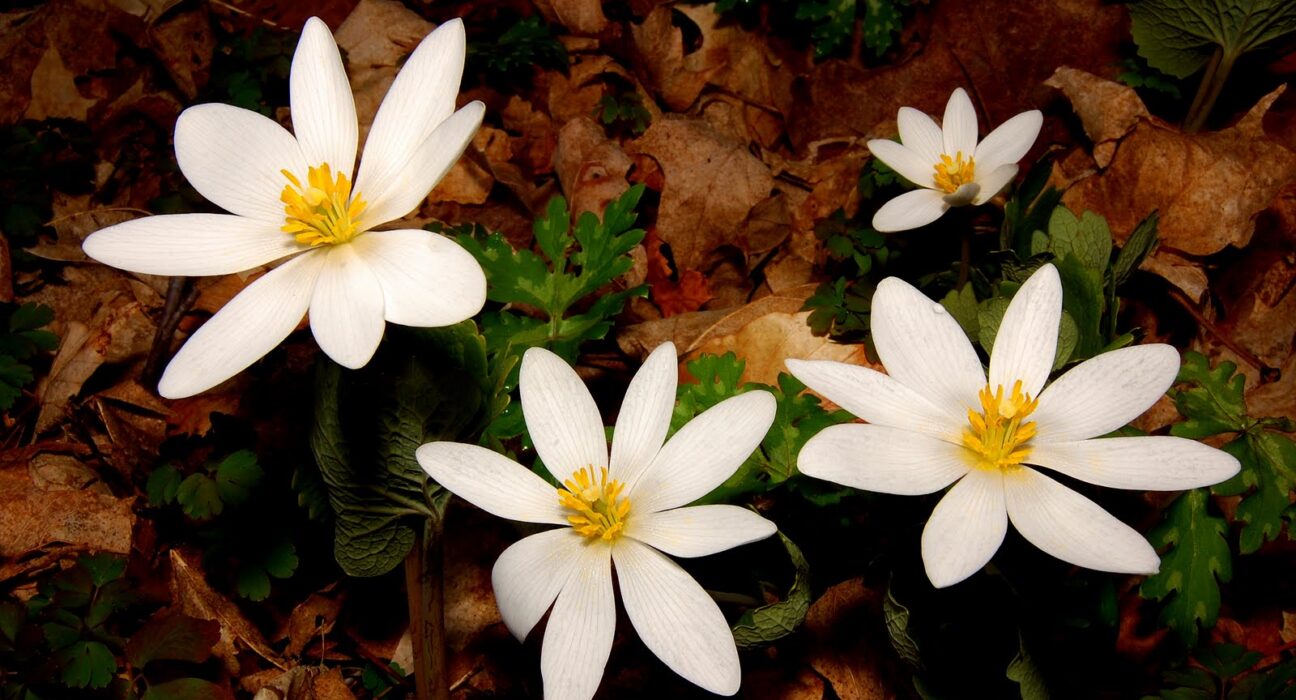The bloodroot plant (Sanguinaria canadensis) is more than just a charming addition to your garden—it’s a symbol of the natural beauty and resilience of native North American flora. As gardeners and eco-conscious individuals seek ways to create more sustainable and low-maintenance landscapes, bloodroot emerges as a prime candidate. This native perennial not only enhances the aesthetic appeal of gardens and natural areas but also offers significant ecological benefits. Here, we explore three primary advantages of incorporating bloodroot into your landscaping: its low-maintenance nature, disease resistance, and pest resistance.
1. Low Maintenance Requirements
One of the most compelling reasons to choose a blood root for your garden is its low maintenance requirements. This plant thrives in the shaded or semi-shaded areas of a garden, mimicking its natural habitat beneath forest canopies. Once established, bloodroot requires minimal care, making it an excellent choice for both novice gardeners and those who prefer a more hands-off approach to gardening. It is tolerant of a variety of soil types, though it prefers moist, well-drained soil enriched with organic matter.
Bloodroot’s growth cycle aligns with the rhythms of the seasons. It emerges in early spring, flowers rapidly, and by late spring, its leaves expand, capturing the sunlight before the overhead trees fully leaf out. By summer, the plant retreats back to its roots, where it remains dormant until the next spring. This natural cycle reduces the need for regular watering and fertilizing, thus conserving resources and reducing the gardener’s workload.
2. Disease Resistance
Another advantage of bloodroot is its remarkable resistance to common plant diseases. In an age where plant health can be compromised by a range of pathogens, bloodroot stands out as a resilient choice. Its disease resistance is particularly beneficial in organic gardens, where the use of chemical fungicides and pesticides is limited or avoided entirely.
The robust nature of bloodroot means that it is less likely to succumb to the diseases that often plague more delicate garden plants. This resilience ensures that bloodroot not only survives but thrives, contributing to the overall health and beauty of your garden without the need for chemical interventions. Gardeners can enjoy the delightful sight of its white, star-shaped flowers each spring, secure in the knowledge that their choice supports a healthier garden ecosystem.
3. Pest Resistance
Equally important is bloodroot’s natural resistance to pests. This characteristic is particularly valuable in ecological gardening, where maintaining the balance of the local ecosystem is crucial. Bloodroot contains sanguinarine, an alkaloid that deters herbivores and prevents insect damage. This natural defense mechanism reduces the need for synthetic insecticides, which can have harmful effects on both the environment and non-target species such as pollinators and beneficial insects.
The pest-resistant properties of bloodroot not only protect the plant itself but also have the potential to safeguard neighboring plants, making it a guardian in the garden. By planting bloodroot, gardeners can create a barrier against pests, naturally reducing the incidence of infestations and promoting a more sustainable gardening practice.
An excellent choice for gardeners
The bloodroot plant is a testament to the beauty and resilience of native North American flora. With its low maintenance requirements, disease resistance, and pest resistance, bloodroot is an excellent choice for gardeners looking to enhance their landscapes while minimizing ecological impact. Its presence in the garden supports biodiversity, conserves resources, and provides a stunning visual highlight each spring.
Embracing bloodroot in your garden not only contributes to its health and vitality but also brings a piece of native heritage and ecological wisdom into your personal outdoor sanctuary.
